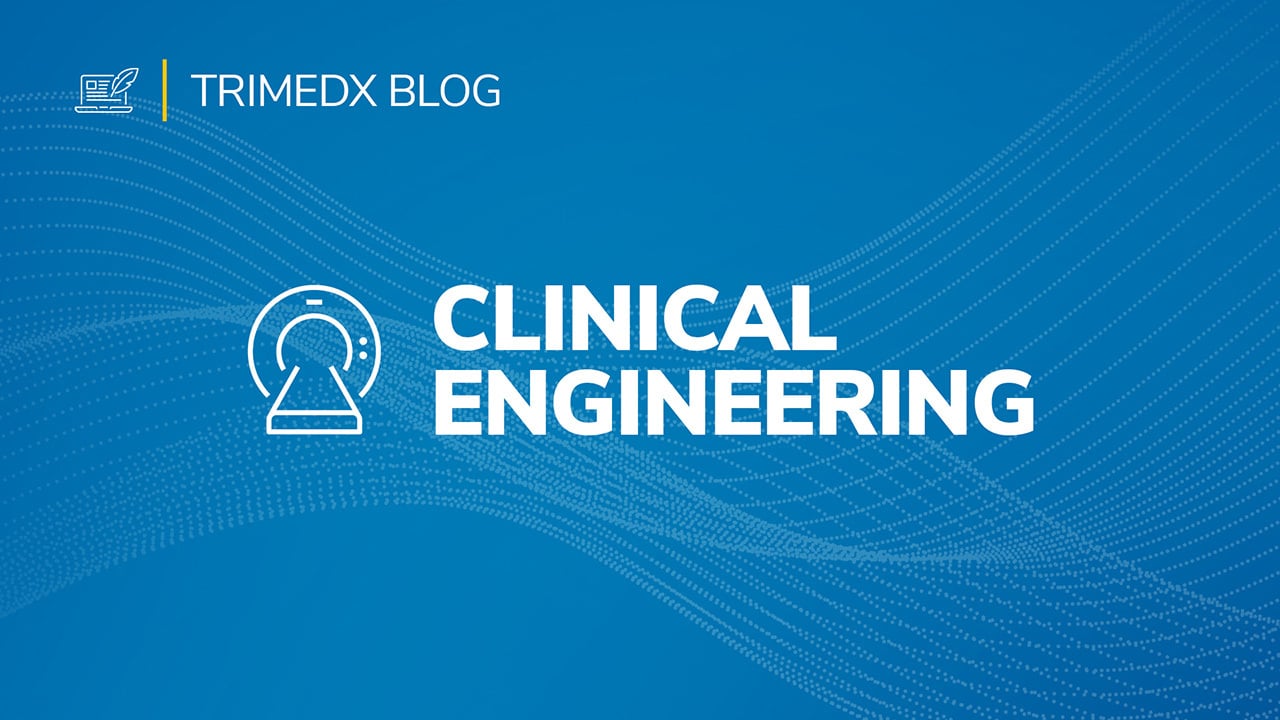An untapped strategic lever: Visibility to your medical device inventory
Part 1 of a 3-part series
With the proliferation of connected medical devices, the lines between IT and BioMed are blurring. As a result, healthcare IT leaders are increasingly being called upon to work closely with and often lead BioMed teams. And just as every CIO knows the importance of understanding their IT portfolio for security and cost reasons, it is equally important to have full visibility to the health system’s medical device inventory, because it is vitally connected to patient care and safety.
In this three-part series, TRIMEDX will explore why having visibility to medical device inventory is so important, how that visibility impacts cyber risk posture, and how inventory and cyber data can be leveraged to make strategic decisions for better device lifecycle management and capital planning.
Do you know what you have?
Between mergers, acquisitions and care shifting outside of the hospital walls, maintaining accurate device inventory over time can be a daunting challenge. In fact, based on data from more than 550 assessments, TRIMEDX has found that many hospitals and health systems have medical device inventories that vary by as much as 40% from what they think they have on hand. Considering that hospitals typically have 10 to 15 devices per bed, this is a significant amount of inventory that may be lost, underutilized, not properly maintained and vulnerable to cyberattacks.
Why inventory visibility matters
Given this, it should be clear why health systems must be able to effectively identify all the devices in their inventory. Without that critical capability, the risk to patient safety is increased because they simply cannot ensure that devices are properly maintained and secure. For instance, how can healthcare leaders confidently answer the following questions without clear visibility to their inventory:
- In the event of an FDA alert or recall, can we quickly identify and, if necessary, remove all affected devices from use?
- Do we know which devices are most at risk to cybersecurity vulnerabilities?
- If a cyber vulnerability is found, can we identify all devices at risk and effectively remediate the threat?
We’ll focus more on the role inventory visibility plays related to cybersecurity in Part 2 of this series.
Inventory visibility and capital planning
In addition to patient safety risks, organizations also run the risk of fiscal irresponsibility by not having an accurate picture of their inventory. As a significant percentage of a hospital’s capital budget, the purchasing and ongoing maintenance of medical devices has a major impact on both capital and operational expenses. What many health systems may not realize is that by simply managing their inventory more strategically, they could potentially save millions of dollars in maintenance costs and unnecessary purchases. TRIMEDX frequently hears these questions about device inventory in response to increased financial pressures:
- How much should we budget in the coming years for capital purchases?
- How can we minimize cyber risk when looking at new capital purchases?
- How can we optimize our inventory fleet and make better decisions on which devices to replace, upgrade, dispose of or reallocate?
In Part 3 of our series, we’ll dive more into how data from device inventory and sophisticated analytics can be used to drive capital planning.
The solution: Inventory visibility as a foundation for clinical engineering
Unfortunately, the answers to these critical patient safety and financial questions are often difficult to uncover. They require complete visibility to the health system’s medical device inventory as well as reliable data that can help drive change and realization of organizational goals.
To help health systems improve patient safety and financial health, TRIMEDX provides a comprehensive, technology-enabled clinical engineering (CE) solution with inventory visibility at its foundation. As part of our program, we conduct a full physical inventory on an annual basis to identify and document every device. This complete and robust inventory validation sets the stage for understanding true inventory and maintenance costs, ensuring patient safety and driving strategic clinical asset optimization.
Through TRIMEDX’s proprietary Computerized Maintenance Management System (CMMS), called RSQ, device demographics captured from the inventory process are integrated with a variety of data and intelligence sources, including service histories, standard procedures, supply chain and automated workflows. When combined with TRIMEDX’s centralized quality, regulatory and cybersecurity support teams, TRIMEDX’s CE solution delivers complete management of FDA alerts and recalls as well as the identification and remediation of critical cyber vulnerabilities.
Inventory visibility is more than just knowing what you have
Finally, inventory visibility is more than just knowing what you own. Inventory data must be readily accessible and powered by analytics to provide actionable insights that enable better decisions and measurable improvements. TRIMEDX’s Clinical Asset Informatics platform brings real-time visibility into the status and availability of devices across the health system through an intuitive, cloud-based user-interface. Informatics gives organizations the information necessary to make key strategic decisions about their medical device inventory.
Additional highlights include visibility to:
- Devices impacted by cybersecurity vulnerabilities as well as remediation progress
- Key regulatory and compliance metrics, along with management of FDA alerts and recalls
- Data-driven financial insights such as a five-year device replacement plan
Often overlooked as a strategic lever in the health system, visibility to medical device inventory is critical to driving patient safety and optimizing device lifecycle management. By combining a robust understanding of device inventory along with powerful analytics, health systems can go a long way to ensuring devices are proactively maintained, risks are properly managed, and the device inventory is strategically leveraged to reduce costs.
Part 2 of this three-part series will discuss how a comprehensive and innovative medical device cybersecurity solution helps improve understanding of the risk posture of clinical assets. To learn more about how our clinical engineering solutions can benefit your organization, fill out our Contact Form.
